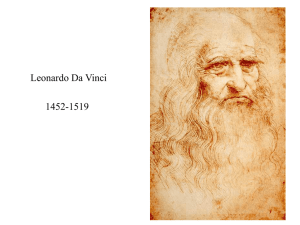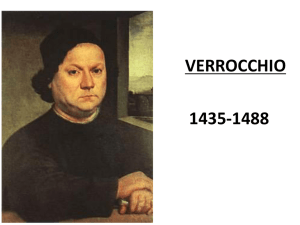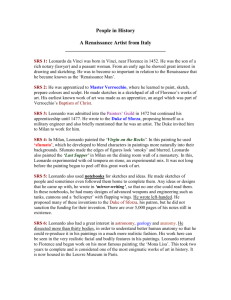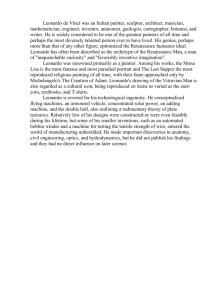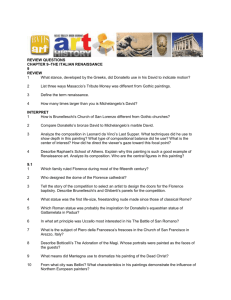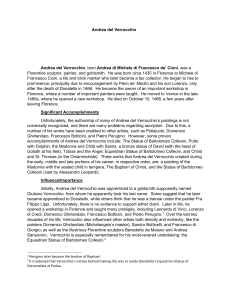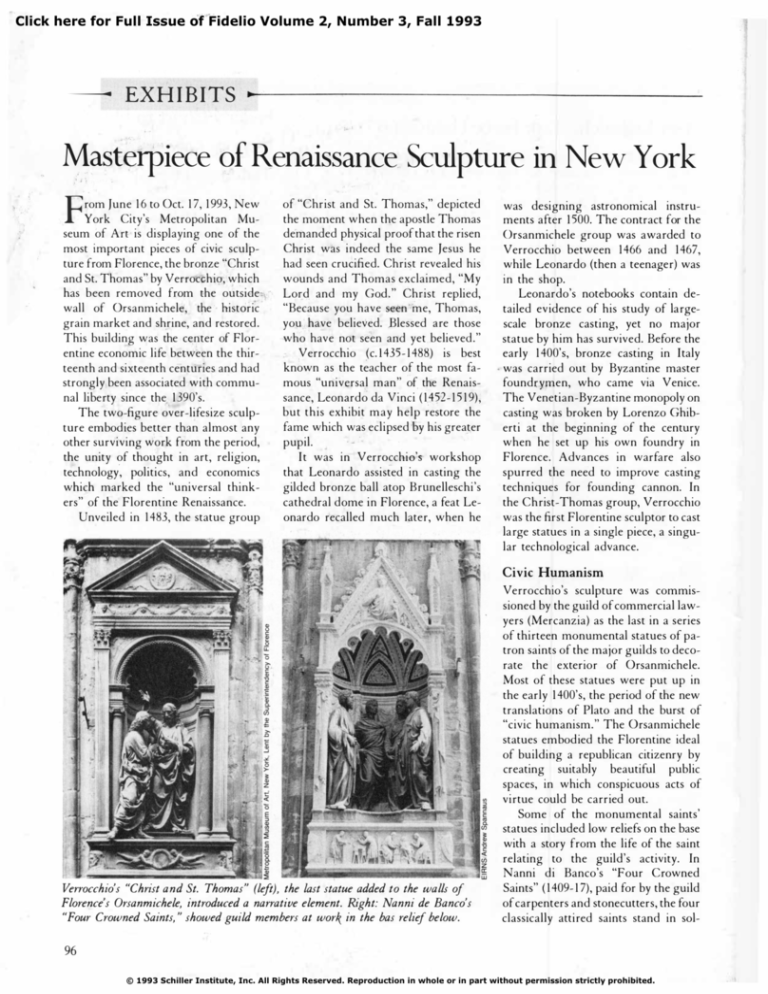
Click here for Full Issue of Fidelio Volume 2, Number 3, Fall 1993
---
EX HIBITS
� -----------------
Masterpiece of Renaissance Sculpture in New York
F
rom June 1 6 to Oct. 1 7, 1 993 , New
York City's Metropolitan Mu­
seum of A n ' is displaying one of the
most important pieces of civic sculp­
ture from Florence, the bronze "Christ
and St. Thomas" by Verrocchig, which
has been removed from the out� ide"
wall of Orsanm ichele, the historic
grain market and shrine, and restored .
This building was the center of Flor­
entine economic life between the thir­
teenth and sixteenth centuries and had
strongly been associated with commu­
nal libe rty since the, 1 390's.
,
'
The two-figure over-lifesize sculp­
ture embod ies better than almost any
other surviving work from the period,
the unity of thought in art, religion,
'
te� hnology , P9litics, and economics
which marked the "universal think­
ers" of the Florentine Renaissance.
Unveiled in 1 483, the statue group
of "Christ and St. Thomas," depicted
the moment when the a postle Thomas
demanded physical proof that the risen
Christ was i ndeed the same Jesus he
had seen crucified. Christ revealed his
wounds and Thomas exclaimed, "My
Lord and my God . " Christ replied,
" Because you have seen ' me, Thomas,
you have believed. Blessed a re those
who have not seen and yet believed . "
Verrocchio (c. l 43 5 - 1 488) is best
known as the t � acher of the most fa­
mous "univ.e rsal man" of the Renais­
sance, Leonardo da Vinci ( 1 4 52 - 1 5 1 9) ,
b u t t h i s exhibit m a y h e l p restore the
fame which was ecli psed by his greater
pupil.
I t was in VerrQcch-io's workshop
that Leonardo assisted in casting the
gilded bronze ball atop B runelleschi's
cathedral d ome i n Florence, a feat Le­
onardo recalled much later, when he
•
was designing astronomical instru­
ments after 1 500. The contract for the
Orsanmichele group was awa rded to
Verrocchio between 1 466 and 1 467,
while Leonardo (then a teenage r) was
in the shop.
Leonardo's notebooks contain de­
tailed ev idence of his study of la rge­
scale bronze casti ng, yet no major
statue by him has survived. Before the
early 1 400's, bronze casting in I taly
was carried out by Byzantine master
foundq-men, who came via Venice.
The Venetian-Byzantine monopoly on
casting was broken by Lorenzo Ghib­
erti at the begi nning of the century
when he set up his own foundry in
Florence. Advances in warfare also
spurred the need to improve casting
techniques for founding cannon. In
the Ch rist-Thomas group, Verrocchio
was the first Florentine scul ptor to cast
la rge statues in a si ngle piece, a singu­
lar tech nological advance.
Civic Humanism
Verrocchio's "Christ and St. Thomas" (left), the last statue added to the walls of
Florence's Orsanmichele, introduced a narrative element. Right: Nanni de Banco's
"Four Crowned Saints," showed guild members at work in the bas relief below.
Ve rrocchio's sculpture was commis­
sioned by the guild of commercial law­
yers (Mercanzia) as the last in a series
of thi rteen monumental statues of pa­
tron saints of the major guilds to deco­
rate the exterior of Orsanmichele.
Most of these statues were put up in
the early 1 400's, the period of the new
translations of Plato and the burst of
"civic humanism . " The O rsanmichele
statues embod ied the Florentine ideal
of building a republican citizenry by
creating suitably beautiful public
spaces, in which conspicuous acts of
v i rtue could be carried out.
Some of the monumental saints'
statues incl uded low reliefs on the base
with a story from the life of the saint
relating to the guild's activity. In
Nanni d i Banco's "Four C rowned
Saints" ( 1 409- 1 7), paid for by the guild
of carpenters and stonecutters, the four
classically atti red saints stand in sol-
96
© 1993 Schiller Institute, Inc. All Rights Reserved. Reproduction in whole or in part without permission strictly prohibited.
existing
niche
de­
signed by Donatello,
the brilliant innova­
tor of the early four­
teenth century. The
sculpture is on view
The Polish Rider
in the Lehman wing
of the museum in a
plain niche replicat­
ing
the
original
niche's dimensions.
shown
on
the
1655. It was selected for this
special issue as a companion to
Thomas
had
"History as
2000"
long been used in
ICa
Florence to
LaRouche,
repre­
justice, because it in­
cludes the two essen­
tial aspects of a good
judge:
clemency­
the infinite mercy of
Christ, who forgives
Thomas
for
his
hardness of heart­
and the desire for
truth,
represented
Science:
by
Amer­
Lyndon
H.
J r., because it so
strongly conveys LaRouche's
concept of the crucial role of
individual ideas and individual
personalities in the shaping of
universal history.
The painting, which recalls
Durer's "Knight, Death, and
the
Devil,"
is
universally
viewed as portraying a youth­
ful
Christian
soldier
fully
by Thomas. A poem
armed and prepared for com­
associated with this
bat. The light, which shines
theme,
written
by
the fourteenth cen­
tury writer Franco
sculptors at work in that day, complete
Rider,"
cover, was painted in the year
Mercy and Truth
sent the theme of
emn conversation. Below, we glimpse
them in their shop--a realistic view of
embrandt's "The Polish
The story of Doubt­
mg
Verrocchio, "Christ and St. Thomas" (1483). The over-liJesize
statue group, recently restored, adorns the outside ofFlorence's
Orsanmichele, a center of Renaissance "civic humanism."
R
Sacchetti, reads
part:
"Touch
in
the
truth as I do, and
you will believe in
the high justice of the Trinity, which
always exalts each person who makes
judgments."
upon the youth's face as he
turns towards the viewer, and
also upon his weapons, empha­
sizes that the individual is both
the living image of God
(imago
viva Dei), and is capable of act­
ing upon history as an adopted
son of God
(capax Dei).
The extreme dynamism of
Through his ingenious calculation
the horse and rider is in stark
Half a century later, Verrocchio's
group was the first to introduce a nar­
of the gestures and stances which unify
contrast to the grim, rocky val­
rative into the major statue, combining
mastery of the Renaissance ideal of
with measuring tools.
the two figures, Verrocchio showed his
the two aspects which had been sepa­
expressing the motion of the mind
rated. This is also true technically, be­
through the movement of the body.
cause the statues are not fully round,
Just as Leonardo would do in his 1483
but hollow in back, i.e., neither ftee
painting of "The Virgin of the Rocks,"
standing statuary nor pure relief.
The group replaced DonateIlo's
bring out the meaning of gestures.
Verrocchio used light and dark to
statue of St. Louis of Toulouse com­
missioned by the Guelph Party, an in­
Christ's right hand is placed in such
stitution of oligarchist rule which was
eclipsed with the sweeping social
encouraging the viewer to imagine the
changes of the Renaissance. Verroc­
chio had to fit his statues into the pre-
hand as he blesses Thomas.
a way as to be brightly illuminated,
radiation of the Holy Spirit from the
-Nora Harne/man
ley beneath the darkened hill.
This contrast is reinforced by
the life-giving pool at the base
of the hill, before what appears
to be the church tower and ru­
ined castle at the hill's crest.
-William F. Wertz, Jr.

